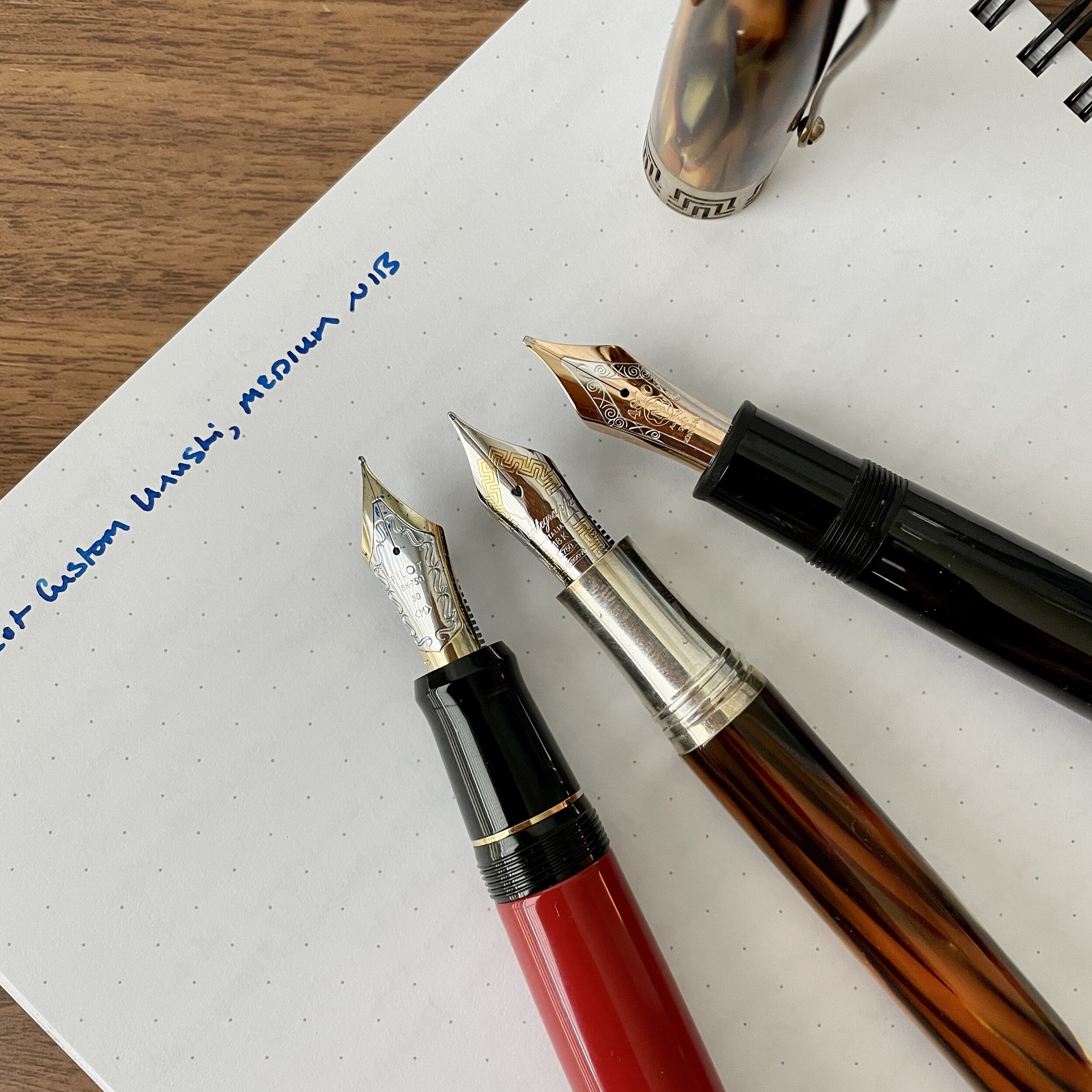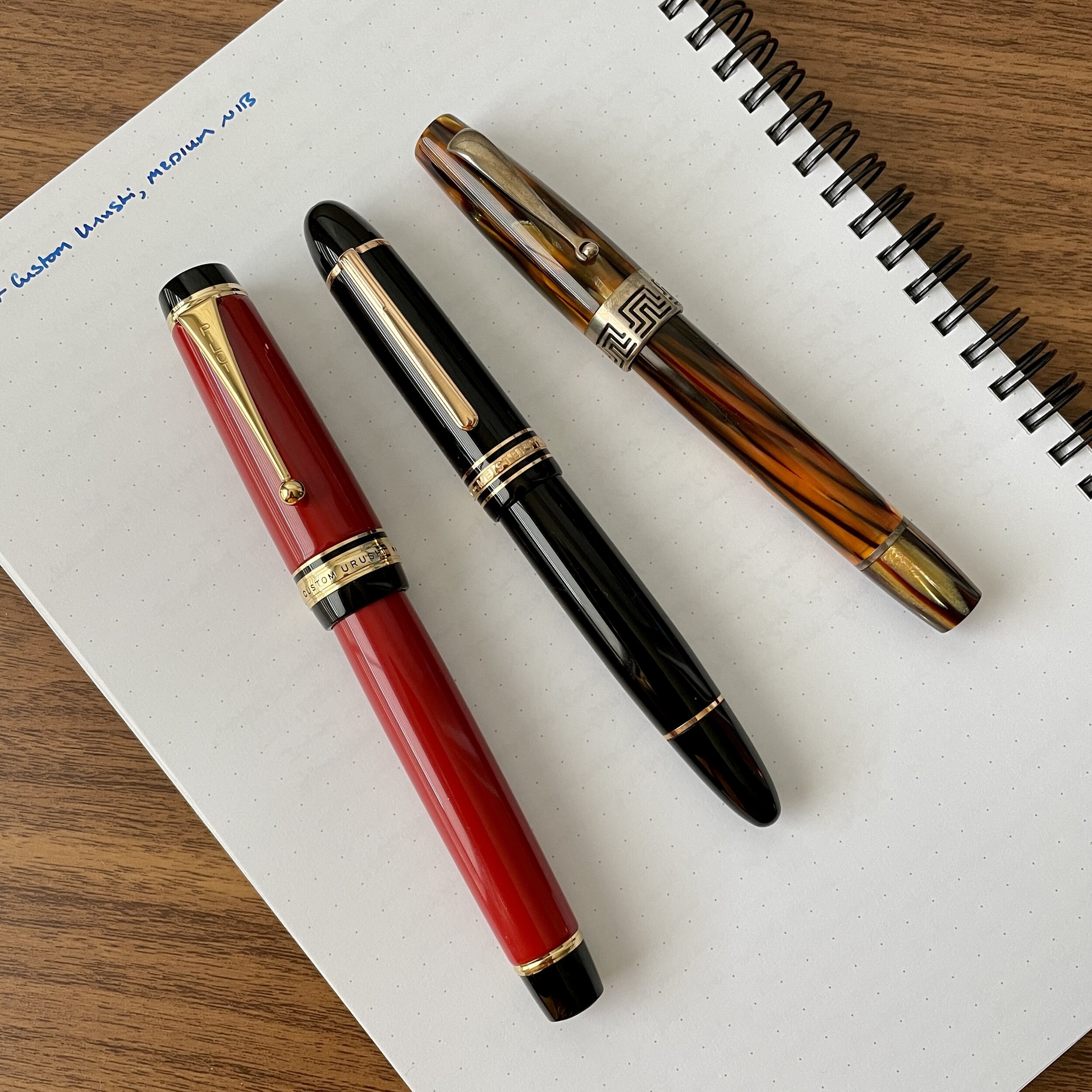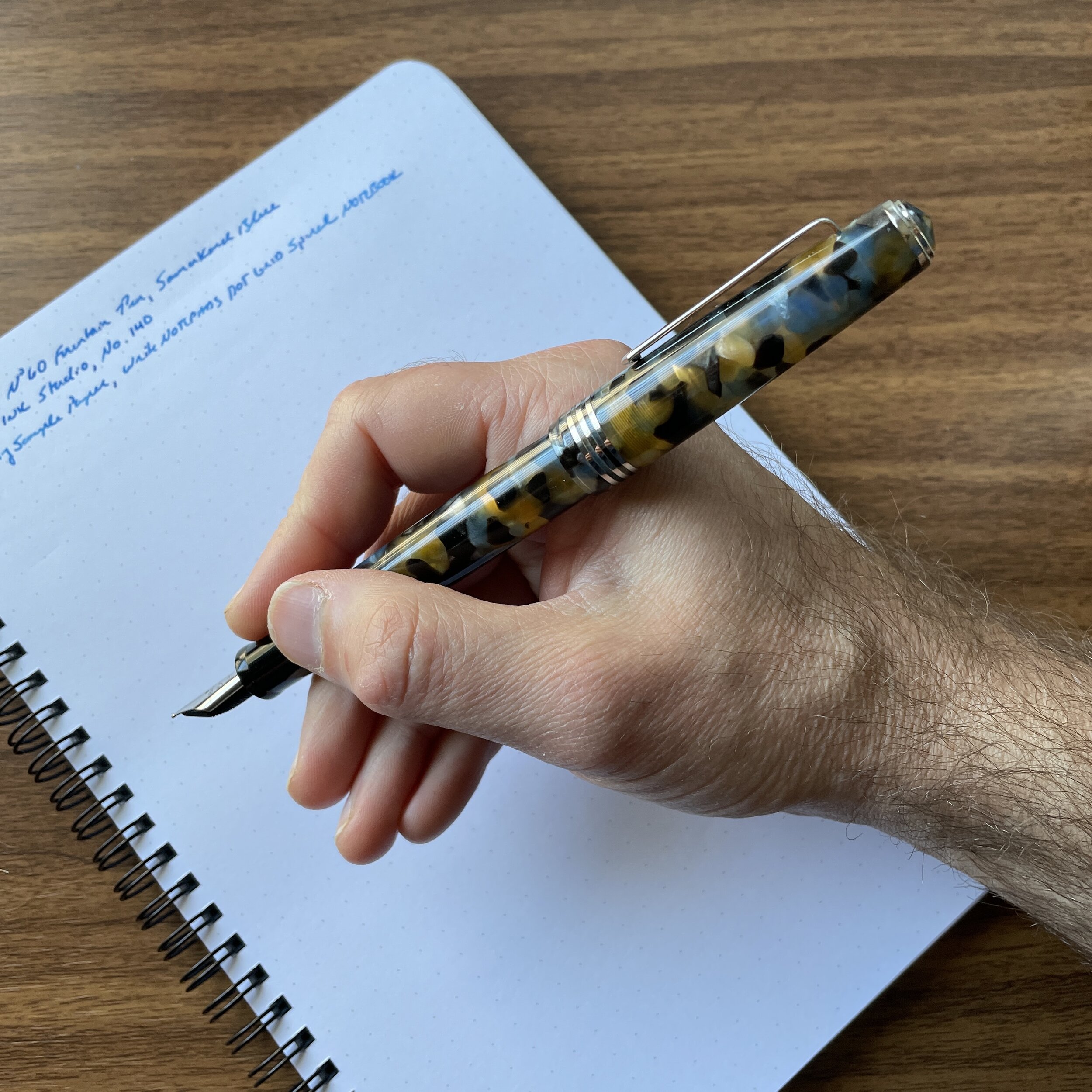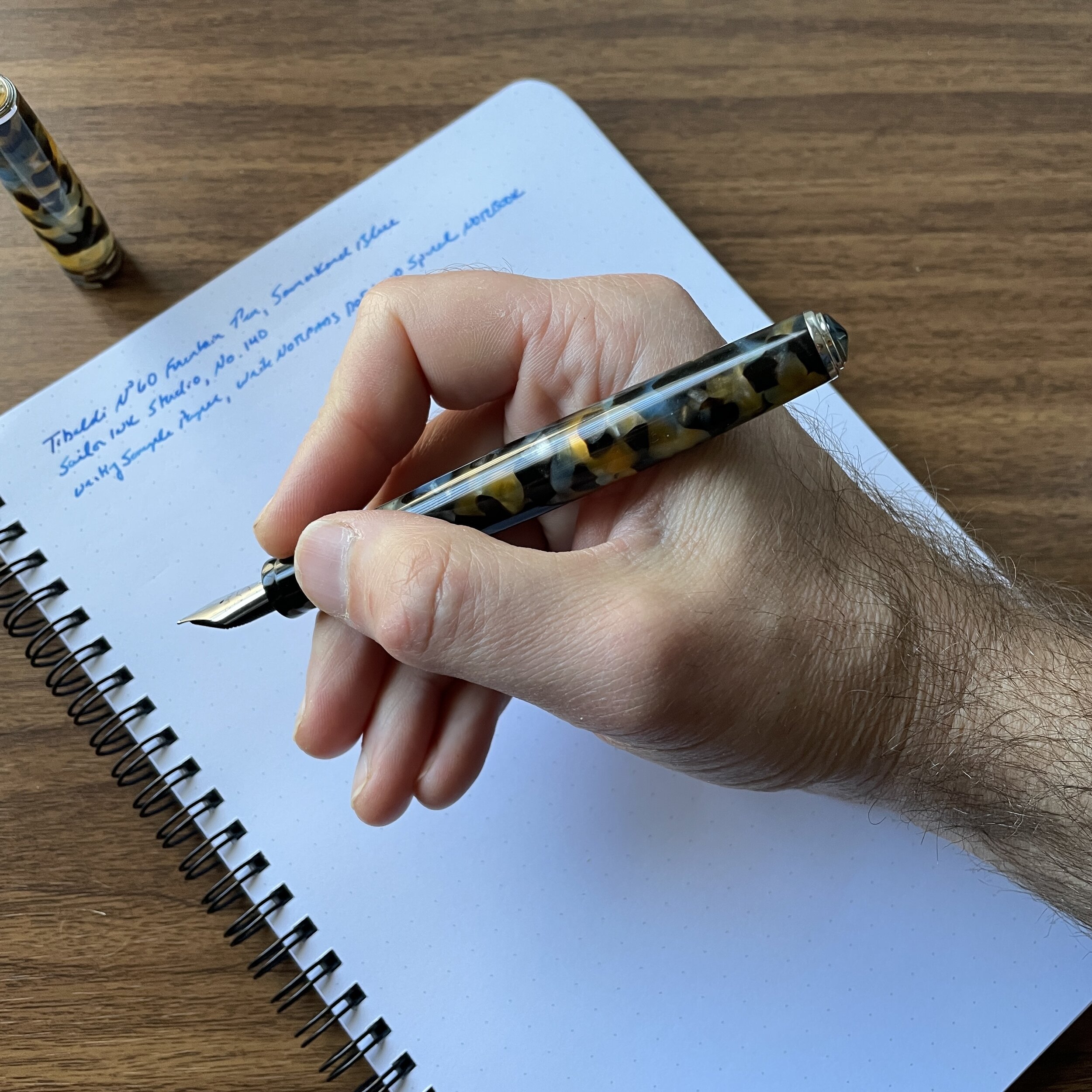As of early this morning, the pens are live in the shop! I’m quite excited to hear what people think of this collaboration with Pennsylvania-based Sunderland Machine Works. The Sunderland mk1 might be my favorite machined pen of all time, and for this special store exclusive we chose a bead-blasted, matte black finish with a bead-blasted DLC-coated clip. The section is a matte red/burgundy, with the overall color scheme designed to evoke the T.G.S. burgundy & black. Note that this will not be a “limited” edition - we commissioned an initial run of 50 pens, and I received the first half or so this week with more on the way. So if it sells out, don’t worry, I can and will get more! Visit the Curated Shop to purchase. All pens ship with a black Pilot .7mm G2 refill, and will also accept MB rollerball and fineliner refills. To read more about why I love the Sunderland mk1, check out my review of their standard model.
A key selling point of the Sunderland mk1 is the lack of any external threads that might interfere with your grip. The threads are actually inside the tip of the pen!
All orders automatically qualify for free domestic U.S. shipping, so be sure to combine your order with any other items you have your eye on in the shop! We carry a wide range of pens, paper, and desk and reading accessories. Recently, we also added the TWSBI Diamond 580 ALR in “Prussian Blue,” as well as the new TWSBI ECO Lilac, to our offerings!
The T.G.S. Curated Shop is an authorized retailer of all brands we carry. By shopping with us, you are supporting original content, pen reviews, pen show events, etc. from The Gentleman Stationer. If you would like to support us even further, please consider checking out the T.G.S. Patreon Program, which offers access to online meetups, exclusive discounts and pre-orders, and more!








